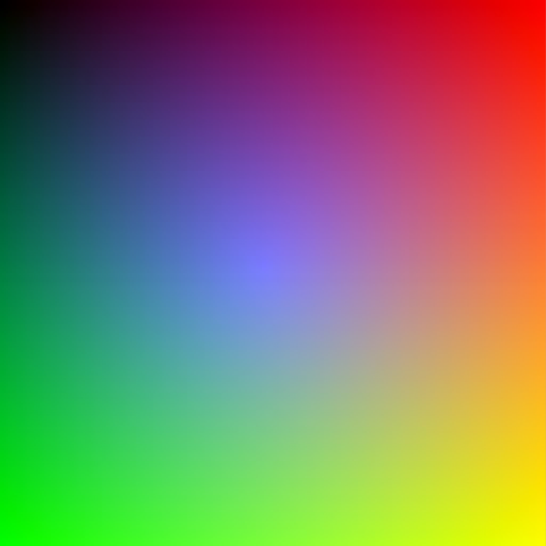The writing above is easy to read because the blue stands out from the white.
White on black is again easy to read.
The green on the red hurts the eyes and wobbles making more difficult to read
The writing is the same colour as the lilac example previously. This colour scheme makes it less legible and blurs the words.
The eye perceives colour through wavelengths, different colours have different waves. These are illustrated in the spectral wavelength;
The eye contains two kinds of receptors: rods and cones. While the rods convey shades of gray, the cones allow the brain to perceive color hues. Of the three types of cones, the first is sensitive to red-orange light, the second to green light and the third to blue-violet light. When a single cone is stimulated, the brain perceives the corresponding color. If our green cones are stimulated, we
see "green", if our red-orange cones are stimulated,
we see "red", if both our green and red-orange cones
are simultaneously stimulated, our
perception is yellow.
Red, Green and Blue can be mixed in to millions of colours
Primary, Secondary and Tertiary
Primary colours can't be made by any other colours but can be used to make any colour. 2 primary colours mixed together to create a secondary colour.
The reason red, yellow and blue are primary colours as opposed to RGB is because RYB are the best for mixing even though we see in RGB.
The eye cannot differentiate between
spectral yellow, and some combination
of red and green. The same effect accounts for our
perception of cyan, magenta, and the
other in-between spectral colours. Because of this physiological
response, the eye can be "fooled" into
seeing the full range of visible colors
through the proportionate adjustment
of just three colors: red, green and
blue.
Subtractive colour is used in print and film, whereas additive colour is optical and screen based.
Complimentary colours are opposing colours optically, for example yellow is complimentary to purple as shown above. By mixing complimentary colours in proportion you create a tertiary neutral grey. The reason grey is created is because in effect we're mixing all primary colours because yellow (primary) and purple is red+blue (both primary) This is illustrated below.
This colour wheel is called neutral tertiary and it's how we see the world because there aren't many bright colours in the world and if there are bright colours they're most likely to be man made.













